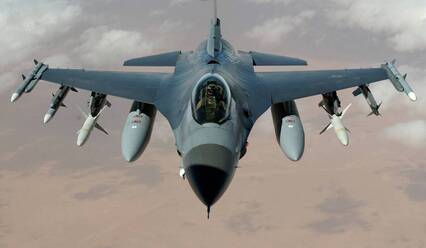States' Pursuit of Military Technology
Since the war in Ukraine, military technology has been at the forefront on key policy discussions, whether in relation to the military aid provided to Ukraine by many of its allies and partners or the effectiveness of the Ukrainian and Russian military on the battlefield. For this part of my research agenda, I examine the choices that states make in the development of their military arsenals, the role of the tools and methods of warfare in the planning for and the actual conduct of military operations, and the reasons that some technologies and practices are abandoned while others gain prominence. My book manuscript, “Imagining the Unimaginable: War, Weapons, and Procurement Politics,” is at the center of these research efforts. Beyond the book project, I am working on a several articles, which are listed below.
Since the war in Ukraine, military technology has been at the forefront on key policy discussions, whether in relation to the military aid provided to Ukraine by many of its allies and partners or the effectiveness of the Ukrainian and Russian military on the battlefield. For this part of my research agenda, I examine the choices that states make in the development of their military arsenals, the role of the tools and methods of warfare in the planning for and the actual conduct of military operations, and the reasons that some technologies and practices are abandoned while others gain prominence. My book manuscript, “Imagining the Unimaginable: War, Weapons, and Procurement Politics,” is at the center of these research efforts. Beyond the book project, I am working on a several articles, which are listed below.
Book Project
|
My book project, entitled "Imagining the Unimaginable: War, Weapons, and Procurement Politics," asks why and how do states decide to develop different weapon capabilities within a similar military domain. Contrary to the existing literature, I argue that ideas, particularly those about the future, play a critical role in shaping states’ decisions about military technology. Based on original archival evidence from fourteen archives and one hundred in-depth interviews with key defense stakeholders, I contend that domestic actors’ ideas about future warfare—what I call the “images of warfare,” consisting of actors’ perceptions of the future
|
environment and their theory of victory—shape actors’ preferences for particular military capabilities. Not all of these ideas, however, are equally influential. I therefore trace how those within the military, the legislative and executive branches, the industry, and the community of defense analysts bargain over their technological preferences. In order to transform ideas into actual capabilities, I argue that actors need to build a cross-cutting coalition within the broader defense community around their “imagined security interests,” while exploiting the state's political opportunity structure. To test this theory, I use in-depth case studies, in which I compare and contrast the development and operationalization of missile defense (1980s-2010s) in the United States, France, and the United Kingdom. I also include evidence from two shadow cases on the pursuit of military aircraft (1920s-1930s) and aircraft carriers (1950s-1960s) in those same states.
Other Work in Progress
- Up in Arms: The Influence of Political Parties on Compliance with the Responsible Arms Transfer Norm. (under review)
|
|
In October 2018, Germany decided to stop exporting weapons to Saudi Arabia in response to the killing of journalist Khashoggi. This was surprising, because scholars consider arms exports to be a prototypical case of locked-in politics, in which countries are incentivized to facilitate rather than restrict the export of weapons. Yet, this article demonstrates that arms export policies can change to be more in line with states’ normative commitments. Under conditions of increased public attention, junior partners in coalition governments can overcome locked-in politics and push to institute genuine policy changes, but only if they have sufficient bargaining power within the coalition. To unveil these dynamics, I explore the responses of the governments of France, United Kingdom, Sweden, and Germany to the Arab Spring, the Saudi-led intervention in Yemen, and the killing of Khashoggi. This article uncovers a new avenue for thinking about norms compliance: the role of political parties
|
- Inside the Nitty-Gritty of Military Innovation: The Challenges of Missile Defense Cooperation. In Texas National Security Review. (in preparation)
|
In the wake of the Russian invasion of Ukraine, Germany spearheaded efforts to develop the “European Sky Shield Initiative” among 17 NATO allies and Finland. Putting this initiative in practice will likely involve difficult conversations between the partners around the interoperability of systems, strategy, operational procedures, command and control infrastructure, the rules of engagement, and intelligence sharing. In many ways, this initiative is part of a large move towards cooperation across different domains of warfare. Instead of assuming that cooperation will increase partners’ ability to adopt, implement, and successfully operationalize a novel technology, I argue that cooperative arrangements face three important obstacles: (1) the unequal distributional politics that often underpin these arrangements; (2) the difficulty of technical integration; and (3) the need for, but frequent the absence of political cohesion. When partners are unable to overcome these three challenges, cooperative arrangements will likely constitute another form of innovation failure.
|
- Prevailing over the Future: The Role of Imagination and Elite Bargaining in the Construction of Military Technology. (in preparation)
- The Eternal Promise of Missile Defense. (in preparation)
- Missile Defense and the Future of Arms Control. (in preparation)

